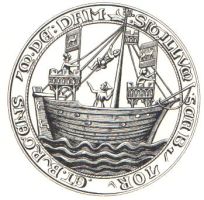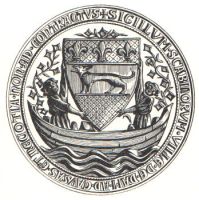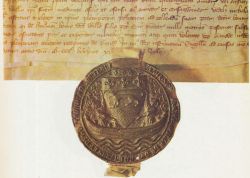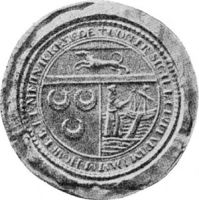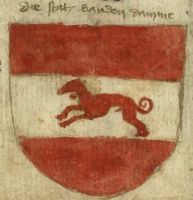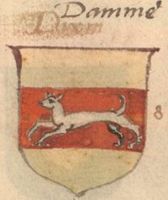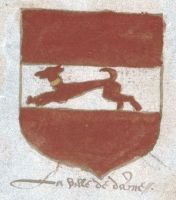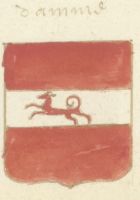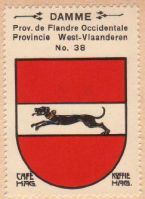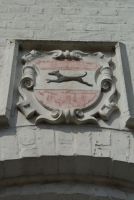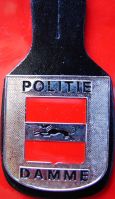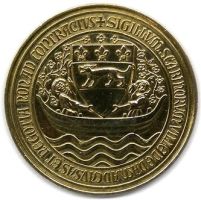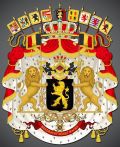Damme
|
Country : Belgium Province : West-Vlaanderen Additions:
|
| Dutch |
|
| French |
|
| English | blazon wanted |
Origin/meaning
The arms were officially granted on February 2, 1838 and again on March 13, 1981.
Damme, or Hondsdamme, received city rights in 1180 by Filips of the Alsace, Count of Vlaanderen. The oldest seal of the city shows a ship, probably a Hanseatic kogge. The contra-seal already shows a dog on a bridge with water in the base. The second seal, from around 1300, shows a ship with a flag or banner with the dog. Later seals show either a ship with a banner, or the arms with a dog on a bar. On one seal the chief of the arms shows three fleur-de-lys, probably for the Count of Vlaanderen (as a vassal of the Kings of France) at the time.
In 1594 the former small cities of Hoeke and Monnikerede were merged with Damme. In the new city council each of the old cities were represented by one person. At the same time a new seal was made, combining the arms of the three cities, see below.
In 1813 Damme and Hoeke became independent municipalities, Monnikerede by the time had disappeared and the area became part of the municipality of Oostkerke. Both Hoeke and Oostkerke became again part of Damme in 1976.
The dog on the silver bar is probably a canting element for the old name, Hondsdamme, hond being Dutch for dog. The name, however, means a dam in/near the Honte river and has nothing to do with dogs.
Ever since the 14th century the arms have remained the same; the colours are known since the late 15th century.
Image gallery
The arms in the Koffie Hag/Café Hag albums +/- 1930
The arms on a police badge (source)
The arms on a VéGé match label
Literature: Servais, 1955; Ewe, 1972
Belgium heraldry portal
This page is part of the Belgium heraldry portal |
Heraldry of the World |
|
Civic heraldry:
|
Other heraldry: |
Contact and Support
Partners:
Your logo here ?
Contact us
© since 1995, Heraldry of the World, Ralf Hartemink 
Index of the site



